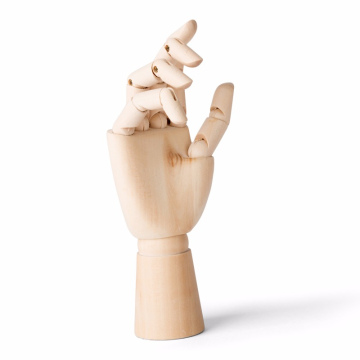The Origins of Ramen
Discover the rich history of ramen, tracing its origins from Chinese noodle dishes to the beloved Japanese staple it is today. Explore the regional varieties of ramen across Japan, including tonkotsu, shoyu, and miso ramen, each with its unique flavors and traditions. Learn about the cultural significance of ramen in Japanese dining, and gain tips for enjoying authentic ramen experiences, whether in Japan or at home. Dive into the world of ramen and savor the diverse interpretations of this iconic dish.
Kakiage: Japan’s Crispy Mixed Vegetable Fritter Delight
Kakiage (かき揚げ) is a beloved Japanese dish that consists of mixed vegetables (and sometimes seafood) that are battered and deep-fried to a crispy perfection. Often served as a topping for udon or soba noodles, or as a side dish with rice, kakiage is celebrated for its crispy texture and flavorful combination of vegetables. This simple yet delicious dish has become a staple of Japanese culinary traditions and is enjoyed across the country in various forms.
The Origins of Kakiage: A Culinary Fusion of Simplicity and Innovation
The exact origin of kakiage is somewhat difficult to trace, but it is believed to have emerged during the Edo period (1603–1868) in Japan. The dish likely evolved from tempura, which was introduced to Japan by Portuguese missionaries in the 16th century. Initially, tempura referred to any food that was battered and deep-fried, often including seafood or vegetables.
Tempura itself became immensely popular in Japan and evolved into a distinct culinary style, particularly during the Edo period. Kakiage may have developed as a variation of tempura, where vegetables (sometimes mixed with small amounts of seafood like shrimp or fish) were mixed together and fried in a single fritter rather than individually, creating a more compact and crispy texture.
Kakiage can be considered a fusion dish, combining the influence of tempura with a more creative approach to batter-frying that allowed cooks to incorporate a wider variety of seasonal vegetables into a single dish. This innovation helped kakiage establish itself as a unique item in the repertoire of Japanese fried foods.
The Culinary Evolution of Kakiage: A Simple Yet Versatile Dish
As kakiage became a more established part of Japanese cuisine, it evolved into a highly versatile dish, with variations appearing across different regions of Japan. The most common ingredients used in kakiage include a mix of vegetables such as:
- Onion
- Carrot
- Sweet potato
- Shiitake mushrooms
- Bell pepper
- Leeks
In some cases, seafood, such as shrimp or fish, is added to the vegetable mixture, creating a seafood kakiage variation. This mix of flavors and textures—crispy vegetables with a tender interior—makes kakiage not only a tasty snack but also a filling addition to noodle dishes or rice bowls.
The batter used in kakiage is typically a simple mixture of flour, water, and a pinch of salt, sometimes with the addition of egg or cornstarch for extra crispness. The batter should be kept relatively light to ensure that the fritter doesn't become too heavy or greasy. The key to a good kakiage is maintaining the crispy exterior while preserving the freshness and texture of the vegetables inside.
Kakiage in Japanese Culinary Culture: A Beloved Snack and Meal Enhancer
Kakiage is not just a dish but a part of Japan’s rich culinary tradition. It is often served as part of a meal, either as a side dish or topping. Kakiage is frequently found in tempura restaurants, where it is offered alongside tempura dishes or used as a topping for noodles like soba or udon. In this context, kakiage adds both a textural contrast and a flavor enhancement to the noodles, complementing the delicate broth with its crispy richness.
In many cases, kakiage is also enjoyed in a rice bowl (called a donburi), where it is served on top of a bed of rice, sometimes with a drizzle of soy sauce or a sprinkle of shichimi togarashi (a Japanese spice mix). This makes it a versatile and satisfying dish, perfect for a quick meal or an informal feast.
Another popular way to enjoy kakiage is as part of a bento box (a packed meal), where its crispy texture and umami flavor make it a perfect complement to other items in the box, such as pickles, rice, and grilled fish.
The Culinary Appeal of Kakiage: A Blend of Texture, Flavor, and Seasonality
The beauty of kakiage lies in its simplicity, yet it offers a depth of flavor that makes it beloved by all generations. Here’s a closer look at the key elements that make kakiage so delicious:
- Crispy Texture: The deep-frying process creates a golden-brown, crispy exterior that contrasts with the tender and juicy vegetables inside. The crunch of the batter, combined with the soft bite of the vegetables, provides a satisfying textural experience with each bite.
- Umami and Sweetness: The seasoned batter imparts a savory umami flavor, while the vegetables, like onions and sweet potatoes, contribute a natural sweetness. Together, they create a perfect balance of flavors.
- Seasonality: One of the unique aspects of kakiage is its ability to adapt to the seasons. In the spring, young, tender vegetables such as asparagus or fiddlehead ferns might be used, while in the fall, mushrooms and pumpkin could take center stage. This flexibility allows kakiage to celebrate the best of what’s in season and offer a new experience throughout the year.
- Versatility: Kakiage can be enjoyed in many forms. It can be made with just vegetables or combined with seafood for extra richness. The light batter ensures that it doesn’t overpower the flavors of the ingredients, making it suitable for pairing with a variety of dishes, from rice and noodles to salads.
Kakiage: A Symbol of Japanese Culinary Craftsmanship
In Japanese cuisine, kakiage exemplifies the skill of deep-frying, an essential cooking technique that requires precision and care. The goal is to create a dish that is both crispy and delicate, without overwhelming the natural flavors of the ingredients. This balance is a hallmark of Japanese cooking, where the quality of ingredients and the method of preparation are equally important.
The cultural importance of kakiage is rooted in its adaptability and comforting nature. It’s a dish that can be enjoyed casually or in a more refined setting, and it has earned a reputation for bringing satisfaction to every bite. Whether served on a rainy day as a comforting noodle topping or as part of a celebratory meal, kakiage continues to be a beloved element of Japanese culinary traditions.
Conclusion: Kakiage – A Crispy, Flavorful Delight
Kakiage is a quintessential example of Japanese culinary ingenuity: a dish that combines crispy texture, umami flavors, and seasonal ingredients into one delectable experience. From its roots in tempura to its rise as a staple in Japanese home kitchens and restaurants, kakiage has remained a beloved dish that is both simple and sophisticated. Whether served with noodles, rice, or enjoyed on its own, kakiage brings the essence of Japanese comfort food to life with every bite. Its crispy, light batter, combined with flavorful vegetables and occasional seafood, makes it a dish that celebrates the beauty of Japanese culinary tradition in a satisfying and universally loved way.






